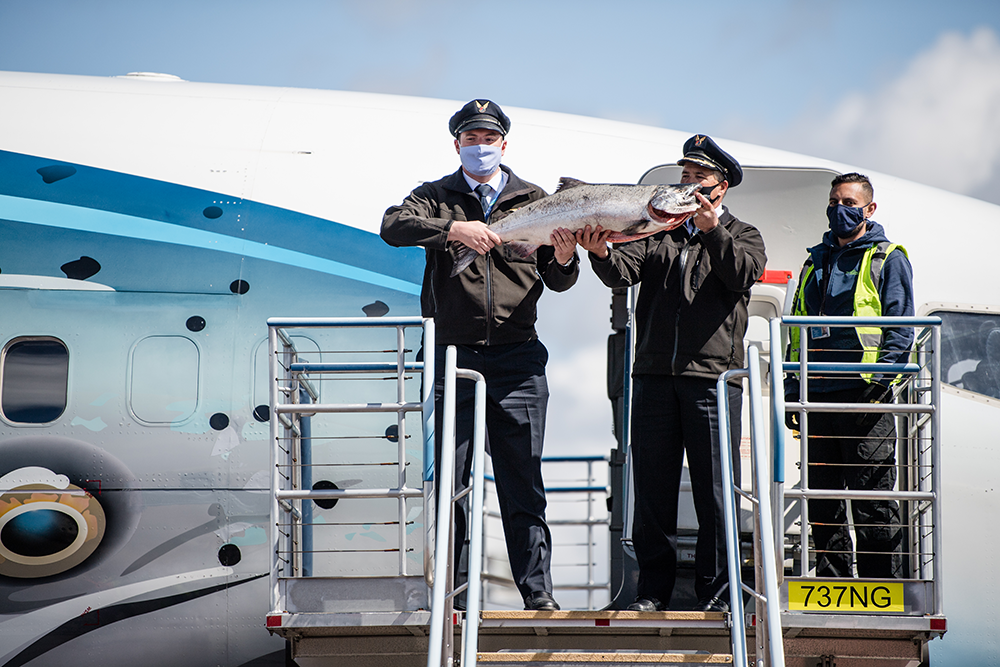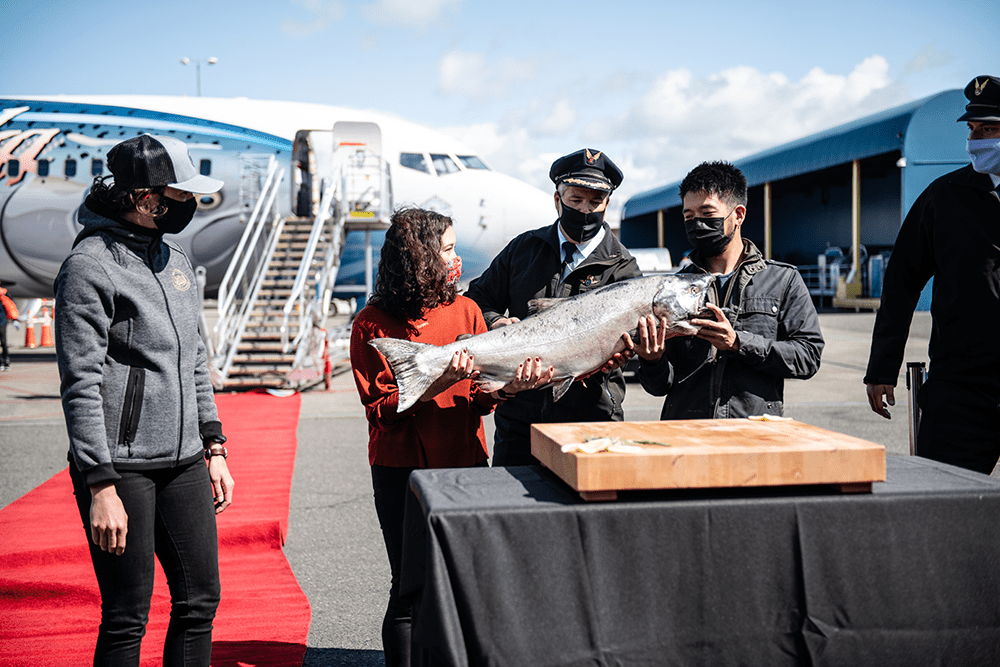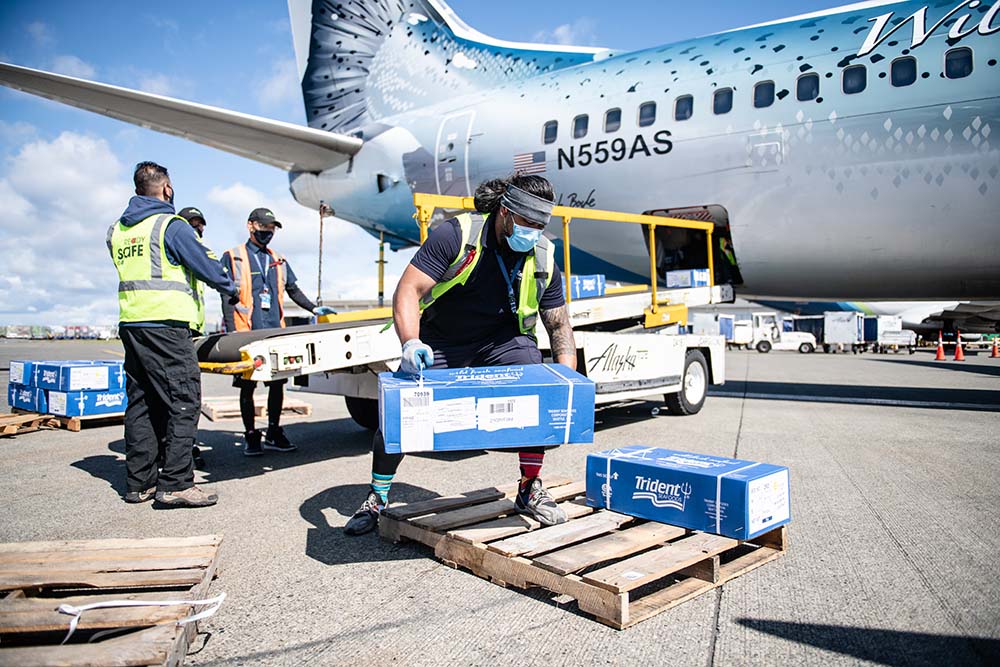Alaska Airlines flies season’s first Copper River salmon to Seattle
Share
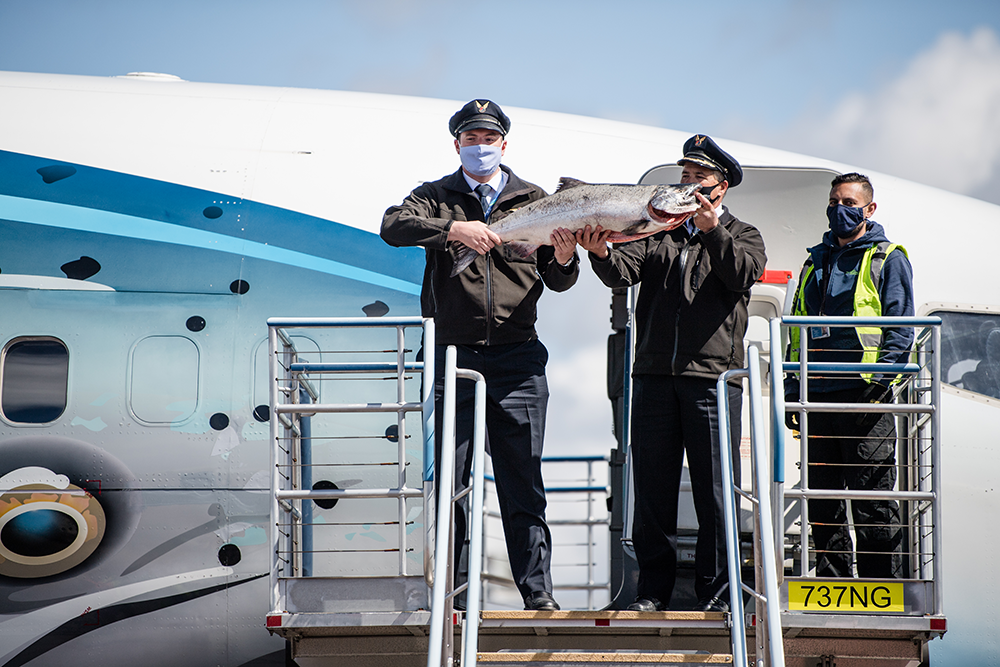
Photos by Jane Gershovich
A fish-filled (& painted) jet touched down at Seattle-Tacoma International Airport shortly after 10 a.m. today, carrying 17,000 pounds of wild Alaska Copper River salmon. For many, the fish are a sign that summer is officially here!
In total, today, we’re flying nearly 55,000 pounds of salmon from Cordova, Alaska to Seattle by Alaska Air Cargo – the first of many shipments expected this season, which runs now through September.
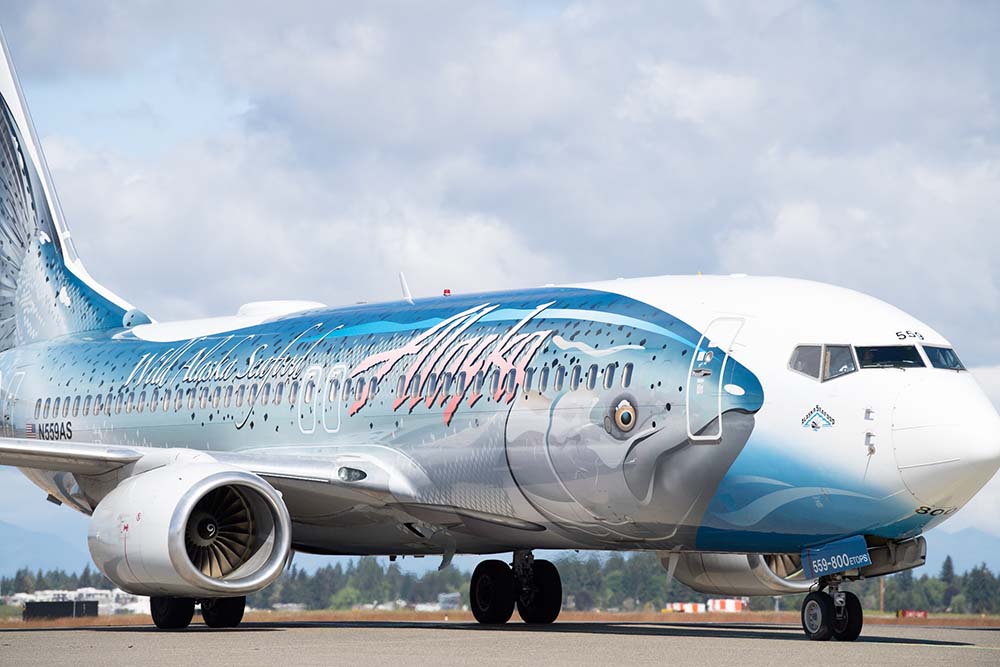

How does Alaska Airlines keep the fish fresh during the flight? Copper River salmon shipped on Alaska Air Cargo arrive as fresh as possible to grocery stores and restaurants across the nation, thanks in part to a cool chain training program required of all airline employees who handle perishables. Employees follow strict seafood quality standards and pass an annual food quality course. The goal is to keep seafood moving rapidly throughout its journey on Alaska Airlines and maintain a consistent temperature range from the time it leaves the water to when it arrives at stores and restaurants.
When is copper river salmon season? Usually mid-May through June.
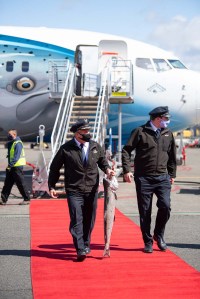
How big can the salmon get? A Copper River king salmon (also called a Chinook) can grow up to 50 pounds or more, according to the Copper River Marketing Association.
How does it taste? Copper River salmon must travel 300 miles from the ocean, where they have spent their adult lives, through rugged terrain and icy waters to reach their spawning grounds, a journey that requires extra stores of energy in the form of fat, according to the Copper River Marketing Association. It is this fat that not only creates the exceptional flavor and texture of Copper River salmon, but also the high levels of omega-3 fatty acids that make it so healthy to eat.
Want to see the season in action? Fly to Cordova, Alaska. Nestled in the thick of the Chugach National Forest, Cordova is quintessential small-town Alaska. It’s a place where everyone knows everyone, and like many coastal areas in Alaska, Cordova is only accessible by boat or plane. It’s a place where neighbors take care of one another, all united by passion for their community and the land they call home. Related: An Alaska state fishing tradition on the Copper River Delta
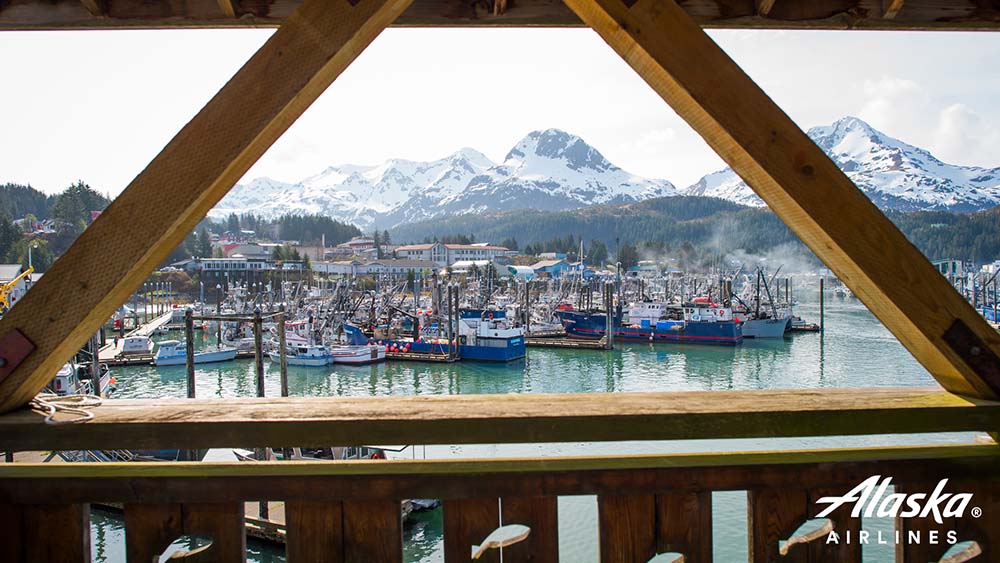
Cook at home with Tom Douglas’ salmon recipe
“I like to use sockeye salmon for this dish – its firm flesh and rich flavors are perfect for steaming. You could, of course, use other types of salmon and this is a good technique for other firm-fleshed fish such as ling cod or halibut. Chinese bamboo steamers work well and they are not very expensive, though any steamer set up is fine. I love the aromatic steam you get in this method of cooking: the water really does have a beautiful aroma and it permeates the salmon.” – Tom Douglas, Seattle chef & restaurateur
Sake steamed Sockeye salmon with sake butter recipe:
What you’ll need:
1 Stalk lemongrass, split lengthwise
2 cups water
2 cups sake
10 Ginger coins, sliced 1/8” thick
2 Star Anise pods
Peel of 1 orange
1 ½ pounds salmon fillet, cut into 4 portions
Serves 4

Directions:
- Bruise the lemongrass with the back of your knife to help release the aromatics.
- Set up your steamer (we use a large saucepan or a wok with a Chinese bamboo steamer set over it).
- Place the lemon grass, water, sake, ginger, star anise, and orange peel in the bottom of your steamer (ie. the saucepan or wok). Bring to a boil.
- Lay the salmon fillets in the steamer basket and cover with the steamer lid.
- Steam until the salmon is just done, about 4 to 5 minutes.
- Place a salmon fillet on each plate. Spoon some of the sake butter over each portion of fish. Garnish with a lime wedge.
- Serve with Crispy Sesame Rice Cake or Aromatic Steamed Rice and steamed baby bok choy. Pair it with some sake or a glass of classic Oregon Pinot Gris.
Bon appetit!
